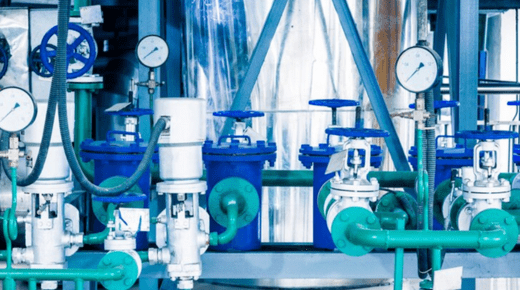
What Are O-Rings And Their Types?
In terms of manufacturing components, the o-ring is a bit of a “living fossil.” O-rings were introduced to the market for the first time at the beginning of the 20th century. Despite their absolute simplicity and the basic nature of their function, they are still very popular today.
Over the past 120 years, engineering, manufacturing, and component design have significantly evolved, yet they have remained largely unchanged in form and function.
Here is an in-depth understanding of common o-ring seals, their applications, and their crucial role in the Industrial Pump System.
What Is O-Rings?
O-rings, also known as rubber rings or toric joints, are ring-shaped seals with a circular cross-section resembling the letter O. They are made from various materials, including elastomeric standards like Nitrile, Neoprene, EPDM, Silicone, metals, thermoplastics, and fluor elastomers like Viton™, all designed for optimal performance.
They provide an affordable and reliable way of sealing hydraulic, pneumatic, and related machinery components. Popular for their easy manufacturability and fit, they secure mating surfaces and prevent pressurized liquids or gases from escaping hoses, piping, and other system passageways.
Common uses of O-rings
O-rings are used in a wide range of industries to meet various sealing requirements.
Transportation
O-rings are crucial in the transportation sector, supporting various modes of transportation such as cars, trucks, railroads, marine boats, and aircraft. The optimal elastomer for a specific transportation application is determined by its resistance to vibration, chemicals, temperature extremes, and harsh environmental conditions.
In addition, manufacturers continuously innovate to create custom O-rings that meet Tier 1 and OEM standards to comply with emission and biofuel regulations.
Electronics
In the electronics industry, o rings protect delicate electronic parts from impurities like dust.
Manufacturers can produce particulate-free O-rings for semiconductor processing applications in clean environments using various material options.
Healthcare
O-rings are essential to the medical industry for syringes, pumps, filtration systems, and connectors. To ensure product safety for patients and healthcare workers, manufacturers of O-rings for medical equipment must assemble them in sterile, clean rooms using specialized, medical-grade materials.
Food & Beverage
FDA-compliant sealing solutions are essential for various industries’ food and beverage processing, dispensing, and water filtration applications.
To meet NSF-61 and 3A sanitary criteria, specialized O-rings that comply with food safety and sanitation standards are available.
Oil, Gas, & Industrial
Oil and gas refineries use numerous valves, fittings, pumps, storage tanks, and other durable components that require strong seals. Industrial O-rings have to withstand harsh chemicals, elevated pressures, and temperatures. O-rings made of peroxide—and triazine-cured perfluoro elastomers, as well as other similar speciality compounds, are advantageous in these kinds of applications.
Types of O-rings
Static o-ring
A static o-ring is a device that provides a reliable, leakproof seal between two stationary parts, like a pipe and a fitting. To achieve this, a groove is cut on a flat surface, and an appropriate-sized o-ring is inserted into the groove.
Subsequently, the o-ring is held in place by a second flat surface that exerts pressure on it. Once the connection is established, the application remains stationary, while the o-ring remains stationary and does not move.
Dynamic o-ring
Dynamic o-rings are used in applications with movement or rotation, such as engines, hydraulic systems, and mechanical devices. They are stronger, tougher, and more resistant to friction and abrasion than static o-rings. They are commonly used to create reciprocating or rotary seals, which maintain a seal between two surfaces moving in opposite directions.




